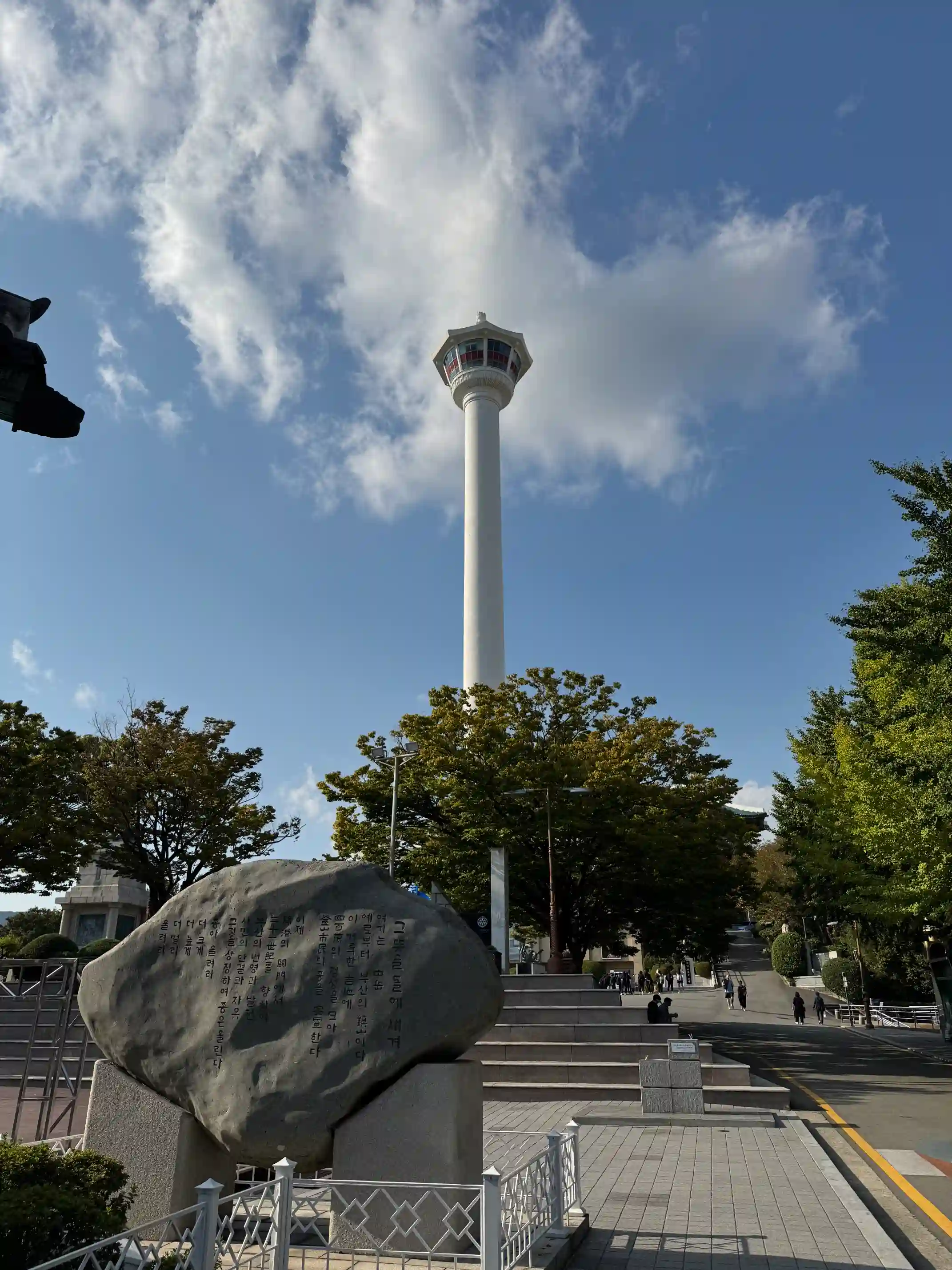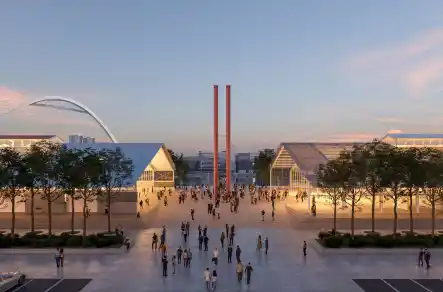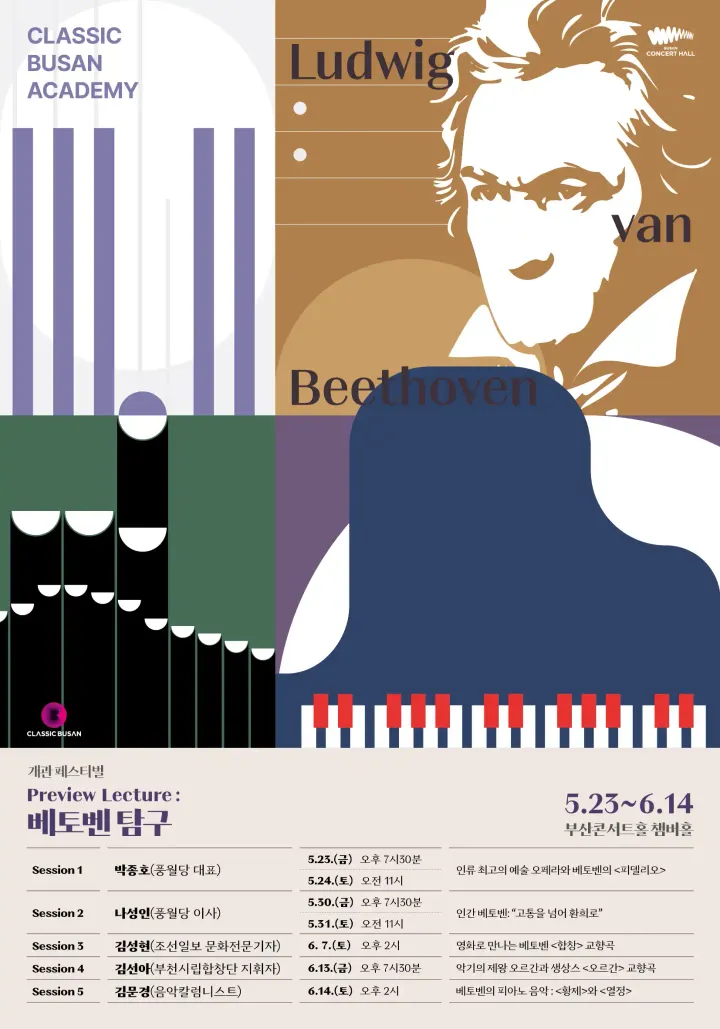How Busan Locals Are Abandoning Nampodong and Gwangbokdong

Busan, South Korea - Nampodong and Gwangbokdong were once the beating heart of Busan's commercial and cultural life, attracting both locals and tourists alike. These districts, particularly famous for their vibrant markets like Gukje Market and Kkangtong Market, represented a unique blend of tradition and everyday life in Busan. Locals shopped here for household goods, fresh seafood, and Korean street food, while visitors marveled at the authenticity of the experience. These neighborhoods were iconic, bustling with the energy of Busan’s true cultural essence.
However, the passage of time has seen a stark shift. What was once a local hotspot is now dominated by foreign tourists, especially drawn by the allure of K-food and Korea's reputation for street markets. As the younger generation of locals has drifted away, seeking more modern and polished areas like Haeundae and Centum City, Nampodong and Gwangbokdong have increasingly catered to short-term visitors. The streets that were once filled with local shoppers now boast rows of souvenir shops, international brands, and food stalls that prioritize tourist dollars over traditional commerce.
This transformation hasn’t come without its problems. Foreign tourists, once eager to experience Busan’s street food culture, are now expressing discontent with the growing issues of poor sanitation, overcrowding, and outdated infrastructure. The narrow, busy streets, once filled with local life, are now often clogged with tourists, creating an atmosphere that is chaotic rather than vibrant. Many of the street food vendors operate in cramped, unsanitary conditions, leading to concerns about food safety and hygiene.
Additionally, the character of these districts has shifted so much that Busan locals themselves now view the area as a tourist trap, with little to offer in terms of authentic cultural experience. What used to be a lively center of Busan's daily life has become an area where even residents feel like strangers, surrounded by food and shops that are no longer catered to their tastes or needs.
Thus, Nampodong and Gwangbokdong are at a turning point. The districts, once integral to Busan’s identity, now struggle with their relevance to locals and tourists alike. While still a draw for foreign visitors, the experience is increasingly seen as lacking in both authenticity and quality. This shift raises crucial questions: Can these neighborhoods revive their original charm while accommodating the influx of global tourism? And if not, what does this mean for Busan's cultural future?
Transformation of Local Culture
The transformation of Nampodong and Gwangbokdong is not just about the shift in what is being sold or who is visiting—it's about the deeper cultural erosion happening as these districts become dominated by tourism. Once the vibrant heart of Busan, these areas were home to traditional markets like Gukje Market and Kkangtong Market, which were essential to local life. People came here not just to shop but to experience a slice of everyday Busan life, whether through purchasing fresh seafood, household goods, or indulging in Busan’s iconic street foods like spicy rice cakes, fish cakes or seed-filled hotteok.
However, as the years have passed, these areas have increasingly catered to the tastes of foreign tourists. Stalls that once sold essentials for daily living now feature rows of souvenir shops and knock-off goods aimed at short-term visitors. This commercialization has led to a noticeable disconnect from local culture. The markets that were once bustling with locals now serve as a playground for tourists looking for cheap, quick buys rather than authentic Korean products. For residents, what used to be the hub of local commerce and culture is now a space filled with imported items and goods they no longer recognize.
Furthermore, Busan’s street food, which is an integral part of the city’s identity, has also suffered in this transformation. Dishes that were once celebrated for their authenticity are now mass-produced in a way that prioritizes speed and quantity over quality. Many of these foods are now geared toward tourists who may be unfamiliar with the original flavors or standards. As a result, many Busan locals no longer eat at these once-beloved stalls, as the food has lost much of its authenticity. What was once an essential part of Busan's everyday culinary experience has now become a tourist-driven commodity.
This shift is compounded by the fact that younger generations of Busan residents are actively avoiding Nampodong and Gwangbokdong, gravitating instead toward newer, trendier areas. Neighborhoods like Haeundae, Centum City, Gwangalli, and Jeonpo-dong are now the go-to spots for younger locals. These districts offer modern cafes, trendy shops, and updated infrastructure that cater to their tastes. Haeundae, with its luxurious beachside properties and hip cafes, and Centum City, home to Busan’s high-end shopping and entertainment, represent the modern face of Busan. Gwangalli, with its famous beach and iconic bridge view, and Jeonpo-dong, known for its burgeoning cafe scene, are seen as far more appealing for younger residents.
In contrast, Nampodong and Gwangbokdong feel stuck in the past, frozen in a cycle of catering to foreign visitors at the expense of local culture and appeal. As these areas become more dependent on tourism, they are losing the very things that made them unique to Busan. The absence of young locals—who are the lifeblood of any city’s cultural vibrancy—exacerbates this sense of cultural loss. Without the energy and presence of residents who grew up in these districts, Nampodong and Gwangbokdong feel increasingly hollow.
As a result, these areas are at risk of becoming tourist traps, spaces that exist solely to serve short-term visitors with little to offer the people who call Busan home. The once vibrant local markets are no longer central to daily life in Busan, and the food, though still marketed as "authentic," has lost its true flavor for those who know it best. Without intervention and a deliberate effort to revive the local essence of these areas, Nampodong and Gwangbokdong will continue to drift away from their cultural roots, alienating both residents and, eventually, tourists seeking something real.
Dissatisfaction Among Foreign Tourists
While Nampodong and Gwangbokdong continue to attract foreign tourists, growing discontent with the conditions and overall experience is increasingly evident. What used to be bustling local markets filled with authentic charm have now evolved into overly commercialized spaces that lack cultural depth. Tourists, even those visiting Korea for the first time, quickly pick up on the atmosphere and are often left disappointed by the lack of local character.
One of the major issues raised by foreign visitors is the poor sanitation at street food stalls. The charm of eating local delicacies in an open-air market setting is often overshadowed by concerns about hygiene. The alleys where food is prepared are narrow and packed with vendors, making it difficult to maintain cleanliness. Visitors frequently note the overflowing garbage bins and the improper handling of food, causing worries about food safety. Even for tourists unfamiliar with local standards, it becomes clear that the conditions are less than ideal, leading to a diminished experience.
The overcrowded and chaotic nature of these districts is another source of frustration for tourists. Streets that were never designed to handle such large crowds now feel congested and unwelcoming. Tourists who come expecting a vibrant local scene often find themselves pushing through throngs of people, struggling to navigate the cramped streets. This overcrowding, paired with outdated infrastructure, makes for a tiring and uncomfortable visit, detracting from the enjoyment of discovering local culture.
What further frustrates tourists is the stark sense that Nampodong and Gwangbokdong have become tourist traps. Instead of the rich, authentic cultural experience they expect, visitors encounter rows of souvenir shops and vendors offering low-quality, mass-produced goods. The authenticity that once defined these areas has been replaced by commercialization aimed at short-term visitors.
No matter how new a tourist may be to Korea, they can quickly sense whether a place caters to local residents or has been transformed purely for tourist consumption. It doesn’t take long for them to feel that these districts, now filled with souvenir stalls and foreigner-focused street food, are no longer genuine cultural spaces. Many tourists leave with the same feeling: they had hoped to experience the real Busan but instead found an area more reminiscent of a constructed tourist site.
For many tourists, there’s an even deeper disappointment upon realizing that Nampodong and Gwangbokdong are not bustling with locals. Instead, the areas are populated largely by elderly residents and foreign visitors. This stark contrast—isolated seniors and masses of tourists—paints a picture of districts that have lost their connection to the broader community. Just as we, as travelers, can often distinguish between a place that’s genuinely integrated into local life and one that’s merely a facade for tourists, foreign visitors to Busan are no exception. They quickly pick up on the fact that the heart of Nampodong and Gwangbokdong beats now for outsiders, not for its own residents.
These combined factors—hygiene issues, overcrowding, commercialization, and the absence of local culture—lead to an experience that leaves many tourists feeling unsatisfied. Instead of immersing themselves in the vibrant culture of Busan, they encounter a place that feels hollow and detached from its roots.
Even though foreign tourists continue to visit in large numbers, the increasing dissatisfaction with Nampodong and Gwangbokdong’s sanitation, overcrowding, and lack of authenticity raises significant concerns about the districts' future as cultural landmarks. Unless meaningful changes are made to restore these areas’ identity, they may continue to lose their appeal not just to tourists, but also to the locals who once made these neighborhoods thrive.
Why Locals Avoid the Area
As Nampodong and Gwangbokdong continue to shift their focus toward tourism, the detachment from their original purpose as thriving local districts has become more pronounced. One of the most significant consequences of this transformation is the increasing disinterest from Busan’s younger residents, who no longer see these areas as appealing. Once central to Busan's cultural identity, these districts have lost their relevance for locals, particularly for those seeking modern, dynamic experiences that resonate with contemporary life in the city.
Busan’s younger generations are increasingly drawn to more modern and trendy areas such as Haeundae, Centum City, Gwangalli, and Jeonpo-dong. These districts offer a vibrant, cosmopolitan experience that aligns with their evolving lifestyles and preferences. Haeundae, with its luxury beachfront, is not just a seaside retreat but also a hub for nightlife, contemporary cafes, and cultural spaces, catering to young professionals and students who prefer a sophisticated, international atmosphere.
Centum City, home to one of Korea’s largest shopping complexes, embodies innovation and luxury, offering high-end retail, entertainment, and dining options, providing a stark contrast to the more aged and crowded streets of Nampodong. Gwangalli, famous for its scenic views of the Gwangandaegyo Bridge, combines the beauty of a beachfront setting with trendy cafes and bars, making it a hotspot for those seeking a relaxed yet stylish experience.
Finally, Jeonpo-dong, once a quiet residential area, has transformed into a bustling cafe district, known for its Instagram-worthy cafes and boutique shops, symbolizing Busan’s evolving culture. These areas reflect a modern, creative lifestyle connected to global trends, attracting the city’s younger population.
In contrast, Nampodong and Gwangbokdong feel out of step with this new direction. The areas have failed to adapt to the changing tastes of Busan’s residents, particularly the younger generations who are drawn to spaces that reflect their aspirations. The over-commercialization of Nampodong, with its focus on tourists, has left little room for local culture to thrive. As a result, Busan’s younger population sees these areas as relics of the past, with little to offer in terms of meaningful cultural or social engagement.
Nampodong and Gwangbokdong have increasingly become overrun by foreign tourists, especially large groups from China and other countries. The influx of tourists has dramatically changed the character of these neighborhoods. Local residents often feel outnumbered and displaced, with the streets crowded by large tour groups and souvenir shops catering exclusively to visitors. As a result, locals have begun to feel disconnected from the districts that once felt like a part of their daily lives.
For instance, Chinese tour groups have become a common sight, moving in large numbers and taking over the area’s public spaces. This has created an atmosphere where locals feel more like strangers in their own city. Many Busan residents, particularly the younger generation, find little reason to visit Nampodong and Gwangbokdong anymore, as these areas no longer reflect the vibrant local culture they grew up with.
As these districts have evolved to cater more and more to tourists, over-commercialization has become a significant issue. Many shops that previously sold local products have been replaced with souvenir stores and vendors targeting foreign visitors, selling items that locals have little interest in. This shift has alienated local shoppers, who no longer see Nampodong and Gwangbokdong as appealing or relevant to their daily lives.
The result is that these areas have lost much of the authenticity that made them attractive in the first place. What was once a vibrant mix of local commerce and traditional markets has been replaced by stalls offering generic goods that lack connection to Busan’s heritage. Local residents are increasingly turning away from these districts, preferring to shop and spend time in areas that cater to their needs and interests.
On top of these cultural shifts, environmental issues are also a major reason for locals to avoid these areas. The increase in foot traffic from foreign tourists has resulted in poor waste management and hygiene issues. Trash is often left piled up in the streets, particularly around the busy food stalls, further contributing to the negative perception of the area among residents. These hygiene problems, combined with the chaotic, overcrowded streets, make the area less inviting for locals, particularly those who remember it as a cleaner and more organized space.
The narrow streets, filled with both food vendors and swarms of tourists, have become increasingly difficult to navigate. For Busan’s residents, this chaotic environment, coupled with poor cleanliness, makes visiting Nampodong and Gwangbokdong an unpleasant experience.



Comments ()